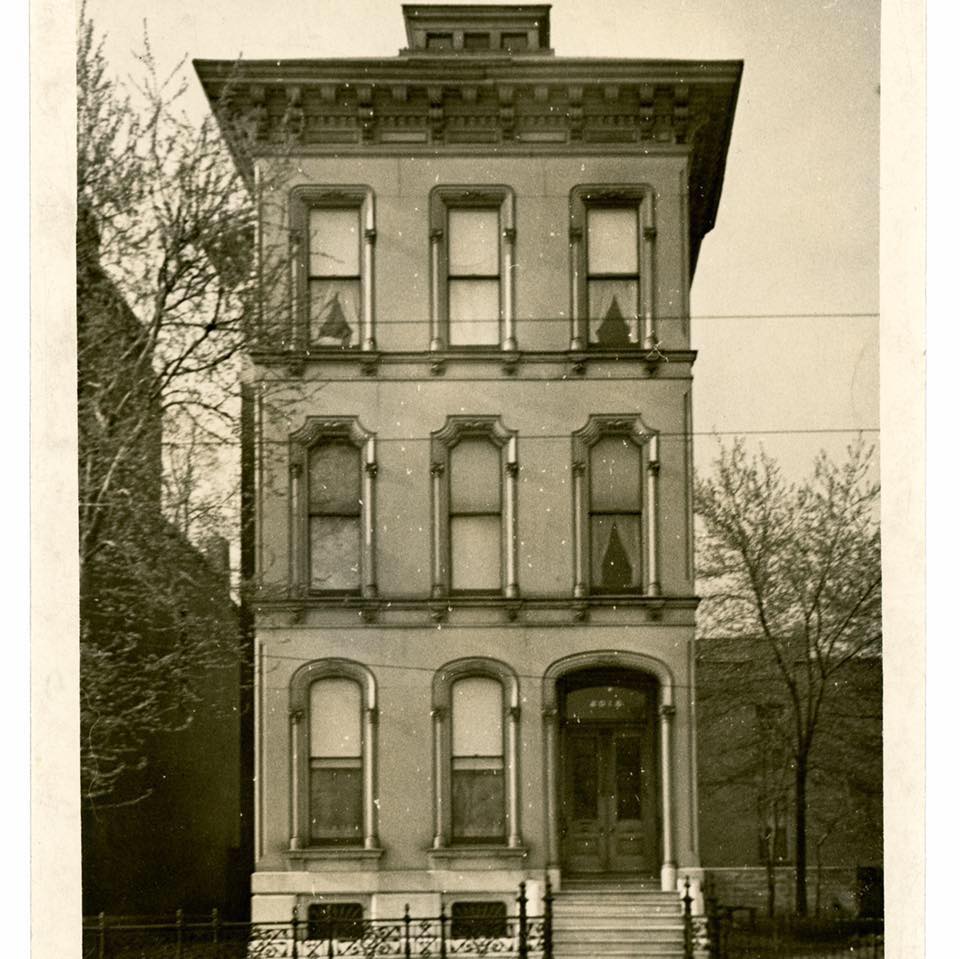This Greek Revival structure in Lafayette Square dates to 1864, and is among the earlier houses built in the area. The street it is located on today is referred to as Mackay Place, but initially it was known as Armstrong Street. The front of the house originally had a porch, as seen on the 1875 Compton and Dry map of St. Louis, and in the current photo, a dark line exists where it was attached to the brick. Even in the 1860s, Lafayette Square had already become a wealthy neighborhood, with a law being passed in 1863 that prevented bars, breweries, and industry from being located within 800 feet of the park. This house was one of the more modest examples of the structures built in the area, as most residents of Lafayette Square built mansions. The neighborhood began to fall out of favor in the early 20th century, as newer wealthy neighborhoods like the Central West End and Compton Heights replaced it, and as industry began to surround the neighborhood. The Great Depression and the decades following saw a number of mansions get turned into multi family rooming houses, and the neighborhood slowly fell into disrepair. By 1972, when it was made into a National Register Historic District, many of the mansions had been abandoned entirely, and the neighborhood was under threat of the construction of a highway that would go through the center if completed. Over the next few decades, preservationists were able to save the area and restore many of the mansions, bringing the neighborhood back to its former glory.
1980s photo from the National Register listing
View from the 1875 Compton and Dry map, with the porch intact.



